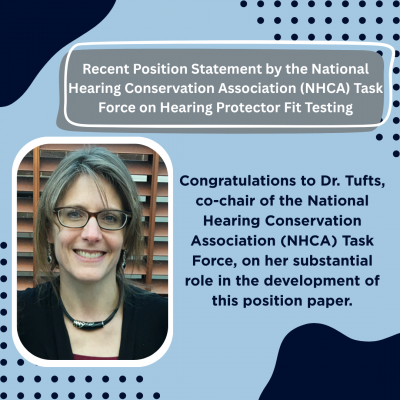
Hearing protection devices such as earplugs are not one-size-fits-all. The amount of protection from loud sound that earplugs provide can vary widely from person to person, from virtually no protection at all to maximal protection – even if they are wearing the same type of earplug. This is due to factors such as ear canal size, the depth of insertion of the earplug, and more. For this reason, hearing conservationists recommend that hearing protection be fit-tested on individual wearers – particularly members of the military and workers in noisy careers – to determine whether they are being adequately protected. Industry and the military have been slow to implement fit-testing due to barriers such as time and cost. But with newer fit-testing technology and a greater emphasis on worker health, those barriers are eroding. Now what is needed is guidance for employers and other stakeholders on how to implement a fit-testing program.
Over the past several months, Dr. Tufts has been part of a National Hearing Conservation Association (NHCA) task force charged with developing a position statement on hearing protection fit-testing. The lead author of this position paper is Jackie DiFrancesco, an Au.D.-Ph.D. alum of our SLHS graduate program. Co-author Devon Kulinski is also an alum, having completed our undergraduate program. The position statement outlines best-practice recommendations for incorporating hearing protector fit-testing into an occupational hearing conservation program. The task force completed its work in the spring, and the position statement was published by NHCA last month at: https://nhc.memberclicks.net/assets/NHCA%20Position%20Paper%20on%20HPFT%20June%202025.pdf. The task force intends it to be a valuable resource for hearing conservationists worldwide as they implement their own fit-testing programs.